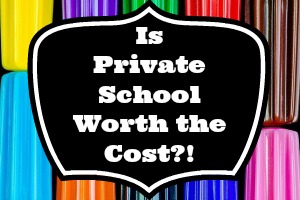Parent involvement has always been a part of the education system, but in recent years, many families have noticed something concerning: the growing number of times schools asked parents for money. From fundraising “donations” that feel mandatory to fees that don’t quite add up, it’s becoming harder for parents to know where their dollars are going. While most schools face budget challenges, some requests have crossed the line into uncomfortable territory. Here are nine examples of when schools asked parents for money in questionable ways—and why families are beginning to push back.
1. “Suggested Donations” That Feel Like Obligations
Many schools send home letters asking for “voluntary contributions” to cover classroom supplies or extracurricular activities. The problem arises when these donations are presented as strongly encouraged or necessary for students to participate. Parents often feel guilty or pressured to give, even when the request isn’t technically mandatory. Some schools have even tied contributions to perks like extra recess time or early access to event tickets. What’s framed as a kind gesture toward education can quickly become an unfair burden for families on tight budgets.
2. Classroom Supply Lists That Rival an Office Depot Order
Each August, many parents dread the long supply lists that seem to grow longer every year. Some lists now include items like paper towels, disinfectant spray, and printer ink—supplies that arguably belong in a school’s operating budget. When schools asked parents for money or materials that clearly support general maintenance, it shifts responsibility away from underfunded districts and onto families. Parents are often too afraid of seeming uncooperative to question it. The result is a hidden tax on education that can total hundreds of dollars per child.
3. Pay-to-Play Sports and Club Fees
Extracurriculars were once considered part of a well-rounded education, but today, they often come with a hefty price tag. Many schools charge participation fees for sports, band, or academic clubs, sometimes exceeding $200 per activity. When schools asked parents for money under the guise of “program support,” it often excluded kids from lower-income households. Students who can’t afford to join miss out on teamwork and leadership opportunities. The intention may be to keep programs running, but the practice creates a quiet divide between those who can pay and those who can’t.
4. Fundraisers That Double as Public Shaming
Selling candy bars or cookie dough used to be an innocent way to raise funds. But modern fundraisers often come with competitive leaderboards or public recognition for top sellers. When schools asked parents for money through these programs, the pressure shifted to children to perform—and those who didn’t sell enough sometimes faced subtle embarrassment. In extreme cases, schools have held pizza parties only for students who met sales quotas. What’s marketed as community support can unintentionally teach kids that worth is tied to financial contribution.
5. Technology “Donations” for Classroom Devices
The push for digital learning has led many schools to adopt one-to-one laptop or tablet programs. While beneficial, these initiatives often come with “optional” tech donations or required insurance fees. Parents have questioned why schools asked parents for money to fund devices that were supposed to be covered by district budgets or grants. Some were even asked to pay for damage protection plans despite minimal device use. These recurring charges blur the line between educational advancement and quiet cost-shifting.
6. “Donation Days” Masquerading as Spirit Events
Non-uniform or pajama days sound fun, but lately, many come with a catch—a dollar or two for “school spirit.” Though small, these micro-fees add up over time, especially for families with multiple children. When schools asked parents for money in this form, it turned lighthearted activities into pay-to-participate events. It can also make some kids feel left out if their families can’t contribute. What began as a creative fundraiser now risks excluding the very students it’s supposed to uplift.
7. Parking Lot and Drop-Off Fees
In some private or overcrowded public schools, parents have been surprised by parking or drop-off “fees.” When schools asked parents for money just to pick up or drop off their child, frustration followed quickly. These fees are often justified as traffic control or facility maintenance costs, but they leave families wondering why such basic access carries a price tag. For working parents juggling multiple school runs, these hidden costs can feel exploitative. It’s one of those charges that feels more like a penalty than a policy.
8. End-of-Year “Celebration Contributions”
As the school year winds down, requests start pouring in for class gifts, teacher appreciation events, and graduation decorations. While most parents want to show gratitude, the sheer number of requests can feel excessive. When schools asked parents for money several times within a short period, it created donation fatigue. Some parents quietly admitted to skipping events out of financial exhaustion. Without better coordination, what should be joyful celebrations risk turning into stressful financial obligations.
9. PTA “Membership” Donations
Joining the Parent-Teacher Association should be about involvement, not income—but many PTAs now frame membership as a financial commitment. When schools asked parents for money to join or stay active, it alienated families who wanted to help but couldn’t afford the dues. Some PTAs have even linked voting rights or volunteer eligibility to payment. This practice undermines the spirit of community involvement that the organization was meant to foster. It’s one of the most overlooked ways school systems unintentionally gatekeep participation.
Why Parents Are Starting to Push Back
Parents are increasingly questioning the constant stream of financial requests, especially when transparency is lacking. They understand that schools face funding shortages but also want accountability for how contributions are spent. The growing number of times schools asked parents for money has highlighted systemic issues rather than solved them. Many families now advocate for clearer communication, public budgets, and equity-focused fundraising. When giving feels like a choice instead of a demand, real community support can thrive again.
Have you experienced any questionable school money requests? Share your story in the comments and join the conversation about fairer funding.
What to Read Next…
8 After-School Activities That Drain Family Budgets the Fastest
9 Elementary School Activities That Disappear as Budgets Shrink
7 After-School Activities That Are Quietly Putting Kids in Danger
9 School Dress Code Rules That Are Now Considered Discriminatory
10 School Supply Lists That Now Feel Financially Impossible
Catherine is a tech-savvy writer who has focused on the personal finance space for more than eight years. She has a Bachelor’s in Information Technology and enjoys showcasing how tech can simplify everyday personal finance tasks like budgeting, spending tracking, and planning for the future. Additionally, she’s explored the ins and outs of the world of side hustles and loves to share what she’s learned along the way. When she’s not working, you can find her relaxing at home in the Pacific Northwest with her two cats or enjoying a cup of coffee at her neighborhood cafe.






